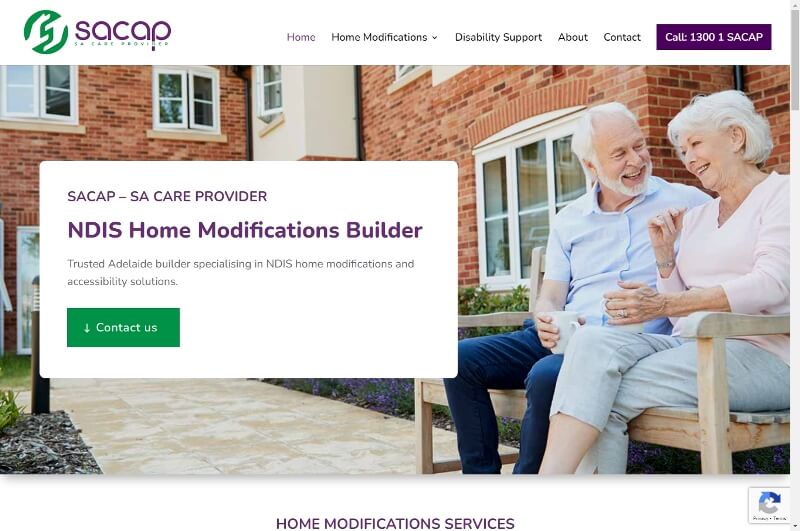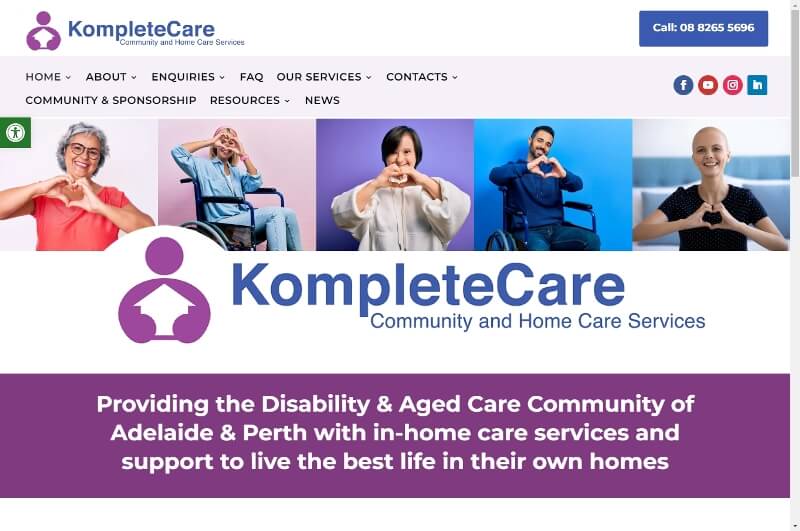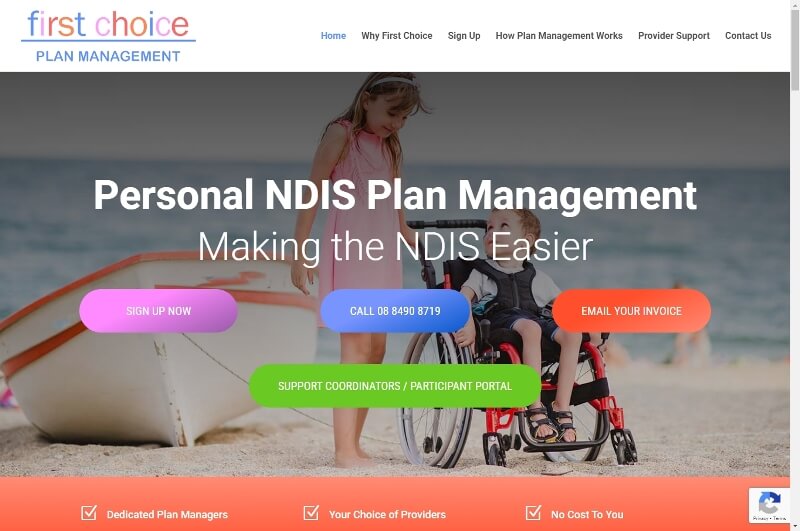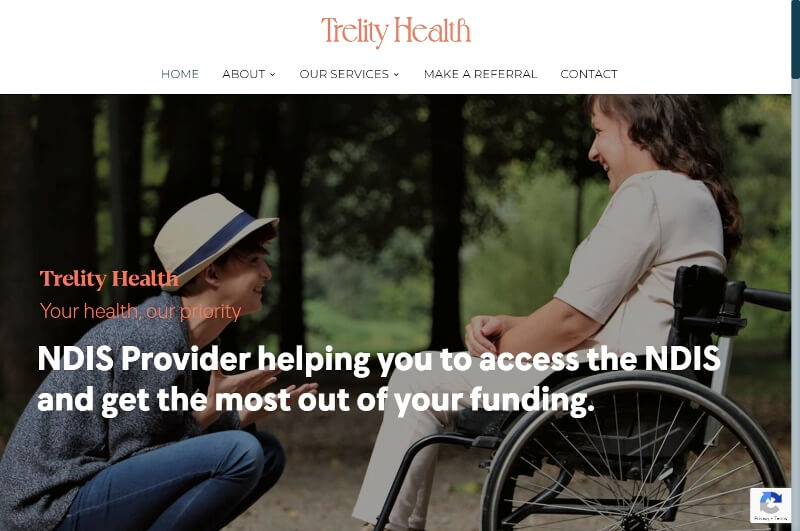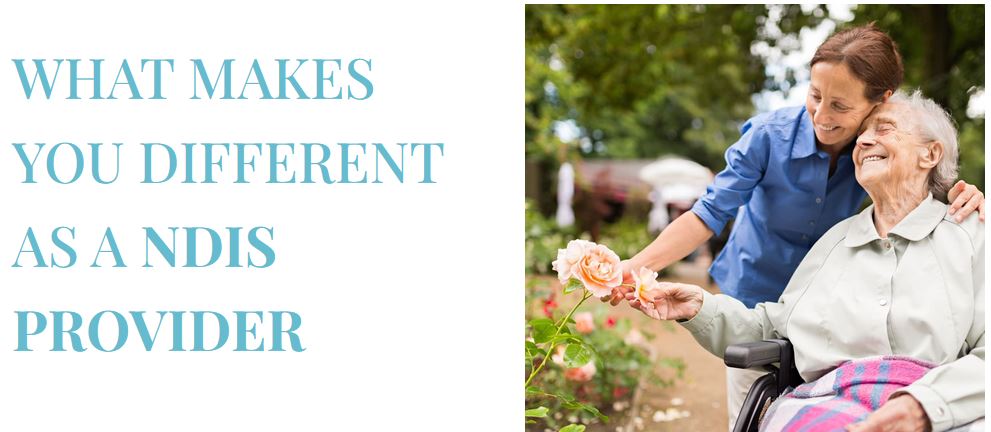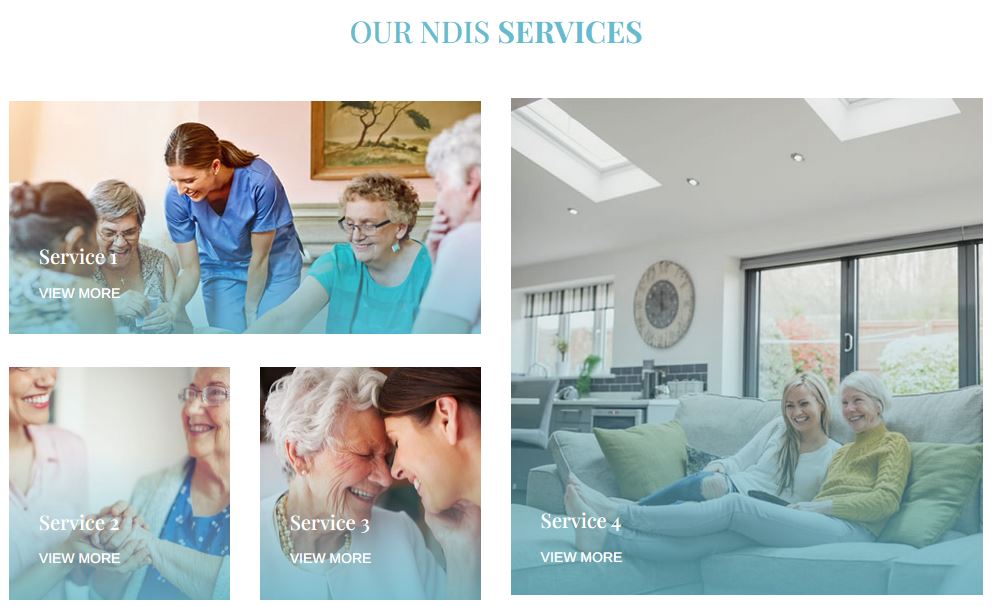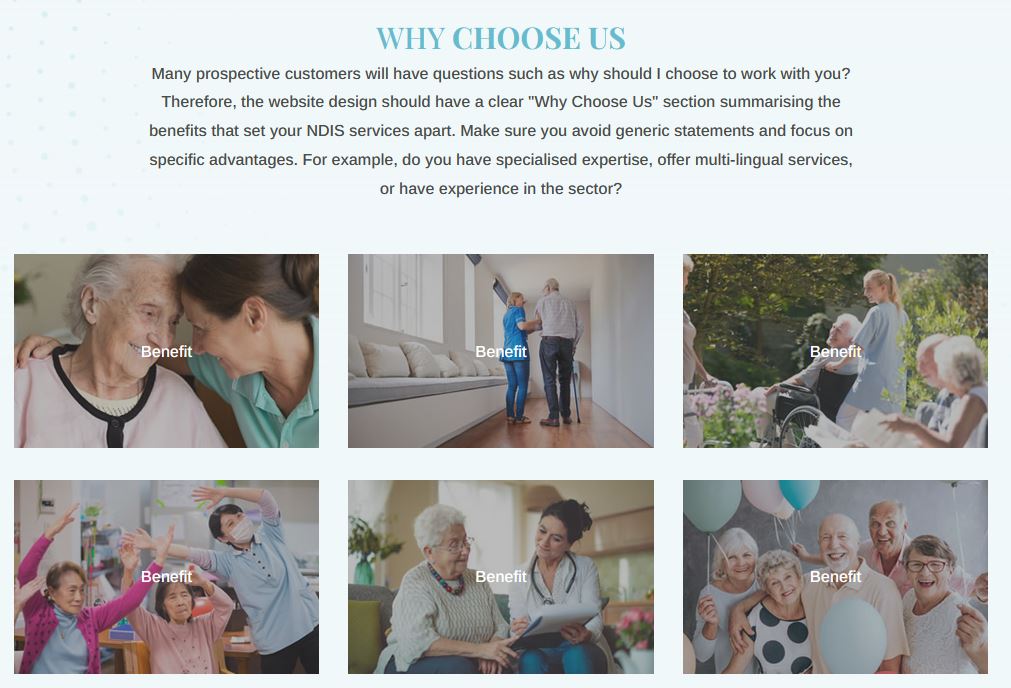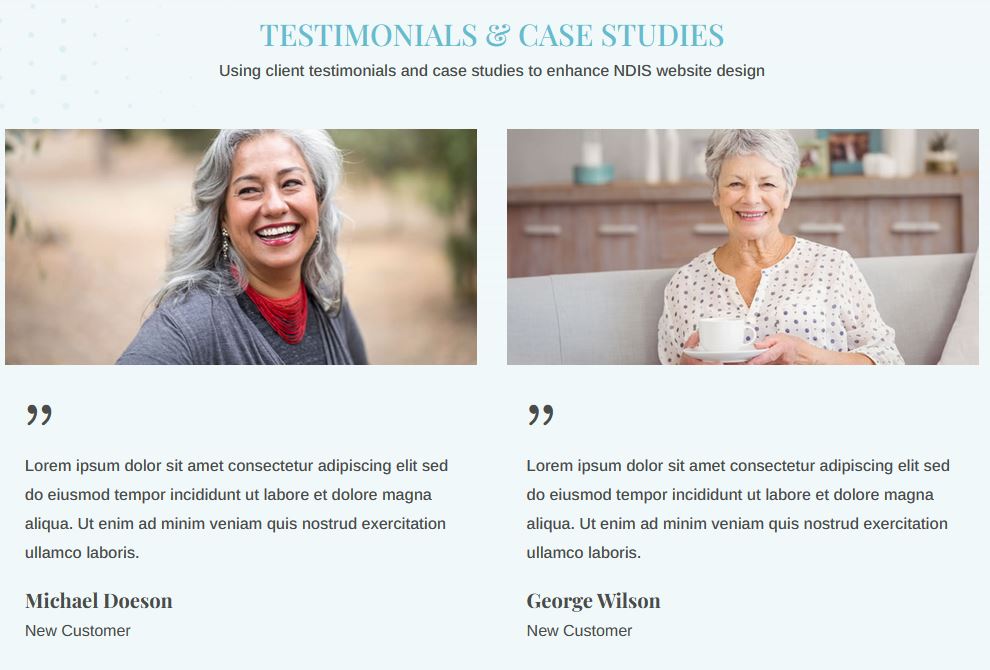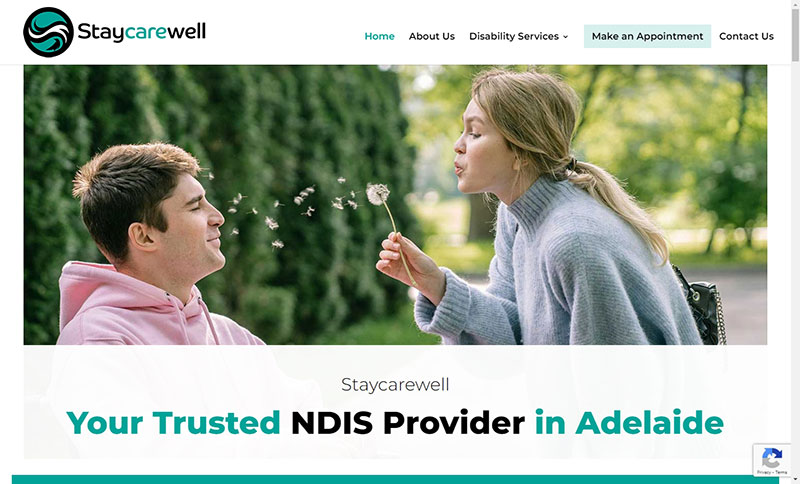NDIS website design – Top 20 tips for effective NDIS website design
A NDIS web designer guide for small NDIS providers that want effective NDIS website design
The NDIS sector is super competitive, and having a well-performing website makes a world of difference in the NDIS space. With the right approach when designing your NDIS website, you have a better chance of being found, standing out, and attracting more clients. The journey to get there is usually long, but there are some fundamental areas you need to get right from the start.
Website Adelaide has designed many websites over the years, and in this blog, we share the top 20 most important tips to consider when deciding on your ndis website design and choosing your ndis web designer.
1. What makes you different as a NDIS Provider
First, consider what sets you apart as an NDIS provider. For example, do you offer specialised support for specific disabilities or other needs? Do you focus on autism, mobility issues, or other areas? If so, what makes you unique and stand out from other providers? All of these considerations impact the planning of an effective NDIS website design. Avoid generic statements and clearly explain the tangible benefits clients will experience working with you. If you can effectively communicate your value, you can better attract the right NDIS customers.
2. The importance of an informative “About Page” as a NDIS provider
A comprehensive about page is one of the essential pages for an effectively designed website as it establishes your authority. It’s important to cover areas such as your education, years of experience, and specific fields of expertise relevant to the NDIS. Write about your certifications and any associations with peak bodies in the industry. Also, highlight your accomplishments and unique qualifications, as this will demonstrate your credibility and commitment to offering high-quality NDIS services.
3. Make sure you provide details about your NDIS services
Providing comprehensive explanations of your services is vital for an effective NDIS website. You should ideally dedicate a separate page to each service you offer, allowing for in-depth and relevant information. Make sure you clearly describe what each service is about, how each service area benefits the client, and if you use any specific processes that are important to tell. This approach not only helps potential clients understand your offerings better but also aligns with Google’s EEAT (Experience, Expertise, Authoritativeness, Trustworthiness).
4. Service areas on your NDIS website is crucial
How you define your service areas is crucial for effective NDIS website design. You should list the city or regions where you provide services. If you are a local provider, you should display the suburbs you support so prospective clients in those areas find you more quickly, enhancing your local search visibility. Highlighting your geographic focus can help differentiate you from competitors who may have a more generic, national approach. If so, this approach also helps explicitly tailor your website and content to your local audience, which can be a significant advantage in attracting new clients.
5. NDIS definitions and packages
Providing various NDIS definitions and packages for well-performing websites is crucial for service providers and clients. It would help if you clearly defined key terms and acronyms, for example, SIL (Supported Independent Living) and PBS (Positive Behavioural Support). You should also explain the specific services included in each package and how they benefit clients. Additionally, don’t forget to clarify your role in these packages—are you a primary provider or a support service contributing to more extensive NDIS plans?
6. NDIS plan management and coordination
Effective plan management and coordination are crucial aspects of NDIS service delivery, so you need to consider this in your NDIS website. Plan management involves handling the financial aspects of a participant’s NDIS plan, including payments to providers and budget tracking.
Support coordination helps participants maximise their NDIS plan by connecting them with appropriate services and supports. To demonstrate the value of these services, provide as many real-life examples and clear explanations as possible.
Plan management and support coordination are particularly relevant for registered NDIS providers who meet the necessary criteria and standards. While unregistered providers are limited in offering these services directly, they should still be knowledgeable about them to support self-managed participants and ensure effective collaboration within the NDIS framework. It is essential to convey your knowledge in these areas.
7. “Why Choose Us” information to potential clients for NDIS provider
Many prospective customers will have questions such as why should I choose to work with you? Therefore, the website design should have a clear “Why Choose Us” section summarising the benefits that set your NDIS services apart. Make sure you avoid generic statements and focus on specific advantages. For example, do you have specialised expertise, offer multi-lingual services, or have experience in the sector? If you have just started your business, you may still need to get client success stories to share, but as soon as you have, make sure you think about what they are telling you and use some of those insights to develop some critical benefits statements.
8. Using client testimonials and case studies to enhance NDIS website design
For those who can provide client testimonials and case studies on your NDIS website from start, it is a great way to build trust. We encourage you to ask and collect diverse testimonials from your clients with different types of disabilities and service needs. If you have photos, this will make those stories and quotes come alive and more engaging and authentic, turning them into compelling evidence of our capabilities and compassionate approach to NDIS support.
9. Having a blog and resource centre to provide value
When designing a new NDIS website, a blog and resource centre may not be the first things that come to mind. These are likely areas to be developed in the coming months after our NDIS website has been launched. Having a plan from the start though for your NDIS website design is a good idea, as you can overtime start position your website as an authority in the NDIS sector.
If you write blogs, keep them informative and valuable for the reader. The topics may include the latest news and changes in NDIS policies or provide downloadable resources like guides and checklists, which help clients better understand how to navigate the NDIS system effectively. The opportunities are endless with great content, so it’s always good to start thinking about how to best educate and engage your audience.
10. Compliance with NDIS standards
Ensuring your NDIS website and services comply with NDIS standards is important for building trust and credibility. For example, detail how your services meet the standards set by the NDIS Quality and Safeguards Commission. Highlight your commitment to continuous improvement through regular staff training and development programs. Additionally, provide clear information about your policies on privacy, complaints, and feedback.
11. Keywords relevant to your NDIS website design
Keyword research is always essential when writing content for your website; a NDIS website is no exception. Using the right keywords is vital to optimising your NDIS website for search engines. Depending on your keyword research, you may use keywords such as “NDIS provider,” “NDIS support services,” or “NDIS plan management.” It is also essential to incorporate long-tail or semantic keywords, for example “NDIS autism support in [Your City]”, to target specific searches. Make sure your selections are naturally used within the content, including in headings, meta descriptions, and image alt texts, which helps enhance our website’s SEO and visibility.
12. Your Google Business Profile to complement your NDIS website
If you are a new provider in the planning phase of your NDIS website design, it’s a good idea to make sure you have a Google Business Profile as well. Proactively using and maintaining your Google Business Profile is crucial for enhancing your local SEO and ensuring your NDIS services are easily found online.
Ensure your profile has up-to-date information about our services, operating hours, and contact details. You should encourage your satisfied clients to leave reviews; if they are good, they will help your online reputation. It is essential to make sure to optimise your with relevant NDIS website design keywords in a similar way as for your website. This strategy helps improve your local search visibility and aligns seamlessly with your other broader digital marketing efforts.
13. External and internal linking on your website
From a new NDIS website design perspective, effective linking strategies can significantly enhance your website’s SEO and user experience. Make sure you link to reputable sources such as government websites, NDIS resources, and industry associations to increase your site’s authority and credibility. Additionally, use internal links to guide users through your site and help them find relevant information. For example, a link from a service page to a related blog post or case of study encourages deeper engagement and aids in navigation, contributing to your overall NDIS website design.
14. Authentic images is critical on your website
Many NDIS providers choose to use stock imagery on their website; however, using authentic images on your website significantly enhances credibility and engagement. And build trust in your customer’s eyes, as well as for the search engines. Make sure you have original photos of your team, clients (with their permission), and facilities instead of generic stock images. Ensure all images are high-quality and relevant to the content, such as photos from community events or service delivery situations, which can effectively communicate the real impact of your NDIS services.
15. Accessibility
When developing NDIS website design, it’s recommended that everyone, including those with disabilities, can use your website. Therefore your website should comply with the Web Content Accessibility Guidelines (WCAG). This includes providing text alternatives for images, enabling keyboard navigation, and ensuring screen reader compatibility. It’s beneficial to conduct user testing with individuals with disabilities to identify and rectify accessibility issues.
It is also good practice to include an accessibility statement on your website that details your commitment to accessibility and how users can request accommodations. This reflects compliance and demonstrates your commitment to inclusive service provision in the NDIS ecosystem.
16. User experience (UX) design
For any website, a user-friendly design means that visitors can find the information they are looking for. When designing a website for NDIS purposes, this is no exception.
Your website’s navigation should be straightforward for any user and have a clear, concise structure. It’s essential that your website is mobile-friendly and displays well on all devices. Optimising your website’s performance to ensure quick load times is critical, as a slow website will not perform well in the eyes of search engines and will cause many users to leave the site immediately.
17. Technical SEO for good on-page SEO
Good technical SEO is essential for all websites. This means enhancing your website’s visibility and performance in search engines.
Ensure your web design has considered optimised on-page elements such as title tags, meta descriptions, and headers with relevant keywords to improve your NDIS website design. Ensure your site has a clear structure with a logical hierarchy, utilising breadcrumbs and a sitemap to help search engines index your pages effectively. Implement HTTPS for security and optimise your site for fast loading times, which is vital for maintaining user trust and search engine rankings.
18. Referral forms
Having easy-to-use referral forms on your NDIS website can streamline the process of clients requesting services. If so, keep the form simple, asking only for necessary information to avoid overwhelming the user.
You should provide clear instructions on completing the form and what to expect after submission, enhancing user experience and efficiency. It’s good practice to send a confirmation email after the form is submitted and follow up promptly to ensure the client feels valued and informed. This not only improves client engagement but also supports efficient service provision.
20. Feedback forms
Feedback forms are essential components of effective NDIS website design and of maintaining open communication with clients. You should ensure these forms are accessible to all users and feature clear labels and easy-to-follow instructions. Encourage your customers to leave feedback on your services. Responding promptly to inquiries and feedback demonstrates your commitment to excellent service and shows clients that their input is highly valued.
21. Contact information is fundamental for good NDIS website design
Providing clear and accessible contact information is crucial for client communication and integral to NDIS website design. Good NDIS website design should display alternative options to contact you, from phone to email, and even chat options. This will enhance the user experience and support your site’s accessibility and responsiveness.

